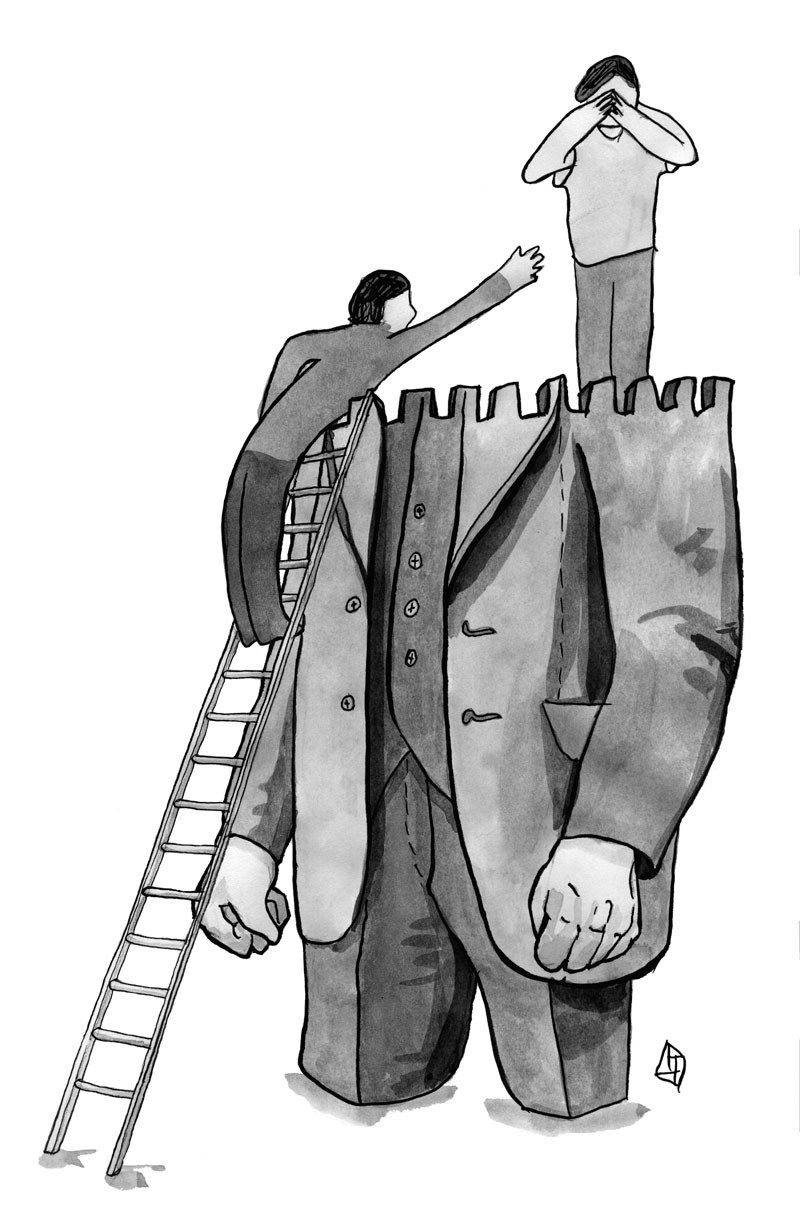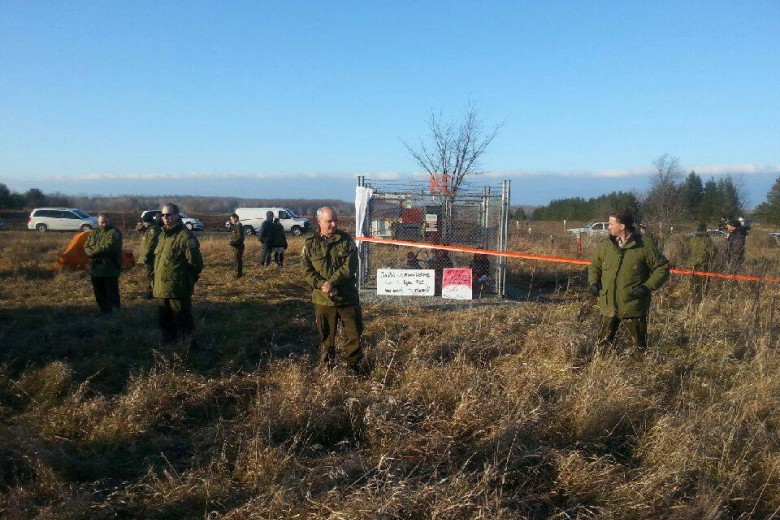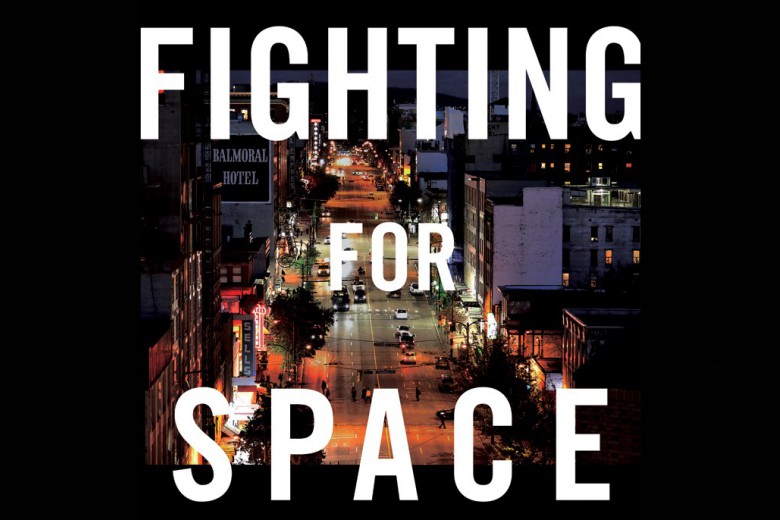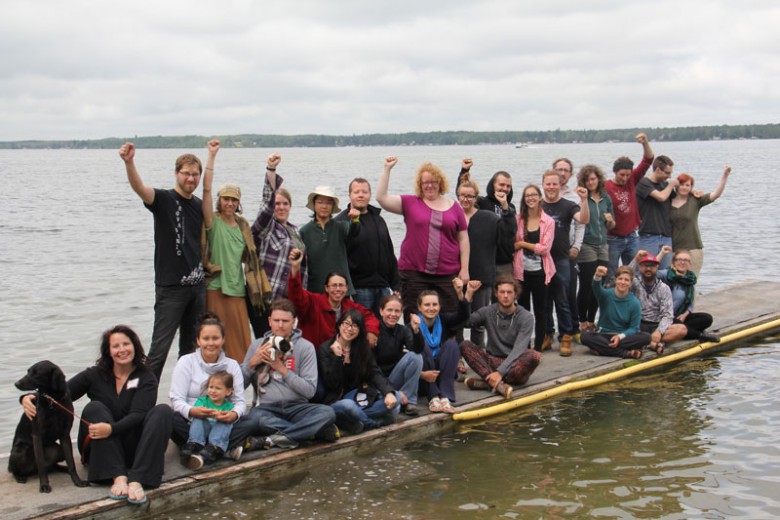
Our dried voices, when
We whisper together
Are quiet and meaningless
As wind in dry grass
— T.S. Eliot, “The Hollow Men”
In spite of more than 30 years of intervention and education strategies designed to end violence against women by their male partners, such violence remains as prevalent as ever. It is high time we took stock of our strategies and our assumptions to determine what is and is not working—and what more can be done.
For generations, women have been speaking out individually and collectively to end gender-based violence, though Canadian society as a whole only started to engage publicly with the problem in the late 1960s and 1970s.
Lenore Walker’s now classic The Battered Woman (1979), which followed Erin Pizzey’s groundbreaking Scream Quietly or the Neighbors Will Hear (1974), were among the first widely read books to expose the scope, dynamics, effects and origins of this worldwide problem. These works, among others, forced the long suppressed issue of gender-based violence into broad public exposure and discussion.
Relying solely on statistics from American police departments and women’s shelters, Walker estimated that in North America one out of every ten adult women was, or would become, a victim of violence by their husbands or partners. Later research, however, would confirm that millions of women who are assaulted never report the abuse to the police or seek safety at a women’s shelter, demonstrating the unreliability of official statistics in estimating total rates of abuse. Those of us working in the field at the time estimated that three or four out of every ten women were victims of domestic violence, with the risks even greater among Canada’s First Nations women.
While so much more could have and should have been done at that time, Canadians at least began to develop programs of support, advocacy, education and intervention for women and children. Since the 1970s we have seen attitudes gradually shift from ignorance and quiet tolerance to awareness and disapprobation (although, admittedly, we are still subjected to a constant barrage of media representations of men as violent, and violence as a valid and normal response to adversity).
Nationwide, we now have at least 470 publicly supported shelters for abused women and children, and the number of these shelters is growing, even in spite of dramatic funding cutbacks in some provinces. There are hundreds of education and counseling programs for children who have witnessed violence in the home. Millions of dollars in public funds are dedicated to research and public education programs on violence against women each year. There are a number of programs delivered through our schools to boys and girls promoting respectful, healthy relationships. And there are 205 treatment programs for men who have been convicted of assaulting their partners or who voluntarily seek assistance for abusive behaviour—though this number has shrunk in recent years as a result of funding cutbacks in Ontario and BC. However, the number of men charged and incarcerated for assaulting their partners, uttering threats, and breaching conditions of peace bonds and restraining orders has grown exponentially despite our growing societal disapprobation for violence against women.
The incidence of violence against women by men has not been reduced in any considerable way in the past few decades. The Canadian Centre for Justice Statistics estimates that the frequency of violence against women remains at approximately three out of every ten. It is well past time we took stock of our strategies and the assumptions that have informed those strategies for the last 30 years.
Violence against women will not end while we ignore a whole generation of our brothers, co-workers and friends.
Conversations with other men
I remember taking part in conferences and small working group discussions in the late 1970s in which women (as well as men, though in smaller numbers) came together to discuss ending violence against women. We all agreed on the need for shelters, advocacy and education for women and education and support for children who witnessed violence. There was lots of talk about how to break the generational cycle of abuse through focusing energy and resources on ensuring that the next generation of men was more respectful of women and that the next generation of women did not expect or accept abuse as a “normal” part of a heterosexual relationship.
When it came to educating adult men outside of compulsory treatment programs, however, there was silence. Some among us even went so far as to suggest that things could only get better as the current generation of men “quietly died off.” We would need to provide criminal prosecution and jails for men who were convicted of assaulting women, but public funds and energies should not otherwise go to waste on adult men.
The result has been an almost total absence of education work with the vast majority of adult men. There have been no significant efforts to enlist the active support of the millions of Canadian men who are not violent or abusive in speaking out against violence against women. The only major exceptions to this have been the White Ribbon Campaign (which is now focused on younger men and youth) and some sensational television and newspaper ads that have relied on shaming abusers as the primary motivator for change—an unreliable and generally ineffective approach.
I would suggest that this unwillingness to support and deliver comprehensive education for adult men in their workplaces, trade unions, political parties, business groups, service clubs, religious places, sports and recreation organizations and professional development forums is a significant contributing factor in our failure to reduce the rate of violence against women by men.
Those men who, like myself, have proudly declared ourselves “pro-feminist” or allies with women should be held particularly accountable for refusing to see that violence against women will not end while we ignore a whole generation of our brothers, co-workers and friends. Instead, pro-feminist men have spent more time publicly condemning other men’s attitudes and behaviours than engaging with and animating that large body of men who might well be natural allies in ending domestic violence. We certainly have enjoyed the celebrity status we receive in the media and the congratulatory support of some feminists, but we have done little to establish links with other men who may not share our gender politics.
When we have attempted to dialogue with these men, the interactions have been less than successful and we have been quick to write these experiences off as demonstrating how “deeply socialized” most men are and how stubbornly they refuse to examine their privilege and power. With men of colour, particularly First Nations men, our generalizations about men and power have demonstrated a lack of sensitivity and a failure to understand the intersecting oppressions of class, race, and gender.
Consequently, heterosexual men seeking connection with and support from other men have proven easy targets for groups like the Promise Keepers (a Conservative Christian men’s organization), men’s rights groups and centres, “fathers’ rights” organizations, and various other reactionary men’s groups. Men who sought support in these groups could feel like they belonged and were welcomed because they were not spoken to condescendingly or reproachfully. Indeed, such groups often play on the language of victimhood, encouraging men to reassert their “rightful” place at the top of the hierarchy.
The result is that for almost 30 years now, pro-feminist men and their organizations have squandered the opportunity presented by feminist analyses of male violence, gender inequality and gender stereotyping to work with other men for progressive change and real gender equality.
Is it possible that our palpable disdain for “non pro-feminist” men (perhaps stemming from our fear of them or even our fear of being too much like them) may have stood in the way of establishing productive and positive connections with them? “Surely we cannot be like them?” we thought. Many pro-feminist men were particularly offended when the late Andrea Dworkin suggested that “all men are capable of rape.” Could Dworkin not see that we were different from them?
In 2000 I wrote an article for the Globe and Mail in which I suggested that one of the most important things I had learned in over 20 years of working on issues of male violence was how similar I was in my thoughts, attitudes and socialization to the men with whom I worked. This shared learning experience about what it means to be a man and how our identity as men affects our relationships with women should always have been our starting point in working with adult men.
Instead, our failure to take up this work has contributed to the lack of progress in reducing the incidence of violence against women. An additional and alarming consequence of this failure is evidenced in the increase in dating violence by young males. The hope that we could create “better men” in isolation from their fathers, uncles and grandfathers has been misguided. We must challenge the assumption that men can’t change or won’t let go of privilege. Pro-feminist men in particular must let go of the arrogant attitude that we are somehow different from other men who fit the gender stereotype we struggle against.
Without the voices of adult men speaking both publicly and privately against violence against women, without adult men demonstrating in their day-to-day lives equal and respectful relationships with women, and without clear challenges by adult men to the objectification of women and girls in the media and in our daily interactions, we will not see the boys of today improve upon the attitudes and behaviours of the men of yesterday.
We must challenge the assumption that men can’t change or won’t let go of privilege.
The trouble with corks
Thanks to the voices of Canadians like Todd Augusta Scott, Dale Trimble and Harry Stefanakis, those who work in Canada’s treatment programs for abusive men have recently started to reconsider the finger-pointing, shaming and blaming approach to encouraging change. Shaming, they argue, does not allow for anything but the most surface of changes. The metaphor often used for this approach is “corking a bottle”: if one corks a bottle successfully the contents will not come out—but the pressure may continue to build. What we hope for, rather, is real change that empties the bottle or refills it with something healthier and safer for everyone.
Probably the most dramatic consequence of this mistaken approach is the number of men who have completed treatment programs and have taken their own lives months or years later. (In my Globe article I described six such suicides of men with whom I had worked personally.) Sadly, after these suicide completions I have sometimes heard the comment, “well at least he didn’t hurt anyone else this time.”
Since the late 1970s, several hundred thousand men have completed the standard psycho-educational feminist-informed treatment programs in community settings and correctional environments. Many of those men have learned successfully to stop using violence against their intimate partners. Yet almost none of these men have subsequently raised their voices in public opposition to domestic violence. Remarkably, few have felt sufficiently engaged to become advocates and peer support counselors. Some might suggest—and I am one of those—that this is representative of our approach with all men. Stern lecturing and shaming may bring about behaviour change but it will not encourage a deeper reconsideration of learned attitudes and thoughts or motivate past offenders to speak out about violence.
Thankfully, these practices are gradually being replaced by models which continue to hold men accountable but offer respect throughout the process of change. Two recent findings give me hope that this sort of shift in how we work with and talk to men can significantly reduce the incidence of violence against women.
The first is from our growing body of knowledge in intervening with bullying in school environments. Canada’s Debra Peplar and Wendy Craig have demonstrated that the single most effective intervention in ending bullying comes from the peers of the bully—not from school officials, parents or police. When a peer intervenes appropriately (not abusively) the bullying incident will almost always end within seconds.
The second example comes from the very work that we counselors, therapists and educators have been doing in treatment programs for men who are violent to their partners or spouses. Since the 1980s these programs have been subjected to some fairly intense scrutiny to justify their public funding. Over and over again the research and follow-up studies with men who have completed these programs and their current or future partners indicate a dramatic reduction in physical violence and a significant reduction in verbal and psychological abuse.
The programs studied have been extremely diverse in approach, length, philosophy, and relationship to the criminal justice system. They include research on psycho-educational groups in Scotland, feminist-informed education groups in the United States, and narrative therapy groups in British Columbia. They all, however, share one common feature: they provide a space for men to come together to talk, learn, and challenge one another. I believe that this “peer intervention” model is the reason for their success.
The power of voices from a shared experience or shared background to influence, provoke questioning and motivate change has been demonstrated to be effective elsewhere. Surely we have good reason to believe we can learn from and expand upon these successes by expanding our education and outreach efforts to include men—even, and perhaps especially, men with a history of violence.
With great respect for how far the feminist movements have brought us, and with due recognition for the leadership of women in moving all of us to re-examine our gender roles, it is time to acknowledge where mistakes have been made. It is time for men to start talking with men.
Bruce Wood is the Executive Director of the Saskatoon Men’s Centre and the author of two books on male violence: A Change of Seasons (1994) and Moving Towards the Light (2000).






